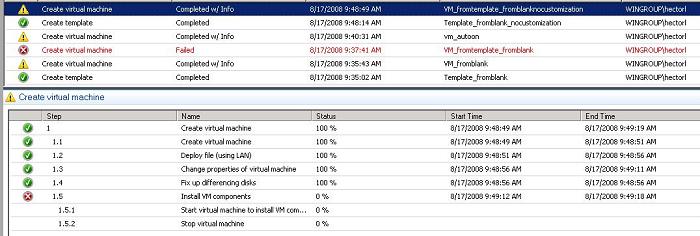Digging deeper into: Error (13206) Virtual Machine Manager cannot locate the boot or system volume on virtual machine
When creating a new VM from scratch with a blank VHD or a VHD with a non-Windows OS, you will get the warning (VMM does peak inside the VHD as part of the creation process to determine this). This warning can be ignored. To have the VM autostart after completion, make sure the ‘Start the VM after deploying…’ checkbox is check at the end of the wizard:

When creating a new VM from template, and that template contains a blank VHD or a non-Windows OS or a Windows OS that has not been generalized (i.e. the OS is not sysprepped), then the job will fail because VMM expects a VM from template to go through the sysprep customization process (hence why we ask for an OS profile). VMM will crack open the VHD and check of the OS is in a sysprep state. If not, then the job will fail. To create a proper template, you can use an existing Vm with a running Windows OS (right click on it and select New Template… this will kick off sysprep in the OS and then store the VM to Library as template… this removes the original VM). Or… if you already have VHDs that have been sysprepped, simply import them to the Library and then when you create a new template… attach that VHD instead of the blank one. Last… you can create a new template that does not require a sysprepped OS by selecting ‘Customization Not Required’ from the Guest OS profile dropdown:

Keep in mind that of the VHD is blank or contains a non-Windows OS, it will complete with the same warning.
Below are the job views to confirm that we are on the same page
New VM from blank VHD (warning)

New VM from template from a blank VHD (error)

New Vm from template from blank VHD with ‘Customization Not Required’ (warning)
